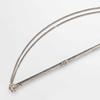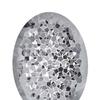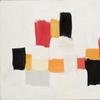__2010500x375.jpg)
Tamar Guimarães and Kasper Akhøj: I blew on Mr. Greenhill's main joints with a very ‘hot’ breath
https://www.dlwp.com/exhibition/tamar-guimaraes-kasper-akhoj/
I blew on Mr. Greenhill's main joints with a very ‘hot’ breath is the first UK exhibition in a public institution by Tamar Guimarães and Kasper Akhøj. It presents moving image and photographic works from the last ten years selected in response to the De La Warr Pavilion in Bexhill-on-Sea, a modernist building that opened in 1935 as ‘the people’s pavilion for art and culture’.
Together and separately, Guimarães and Akhøj explore objects, situations and the residual histories of art, design, architecture and the institutions that present them, often exposing unexpected connections between states of rapture and modernity. For the last five years, much of their work has emerged from research undertaken in Palmelo, a small town in the Brazilian interior. Built in the 1930s around a study group and a sanatorium, many of Palmelo’s 2,000 inhabitants are Spiritist mediums who practise a collective healing form they call the ‘magnetic chain’.
The exhibition’s title relates the Spiritist community of Palmelo to Bexhill-on-Sea. It is a phrase from the memoirs of Arthur Spray (1889 – 1961), who lived in the town throughout the 1930s and practised healing through hypnosis, direct touch and at times by blowing on body parts, from the upper floors of his cobbler shop a few streets away from the Pavilion. Through the lens of a shared legacy, the show brings together the disparate histories of Brazil and Bexhill-on-Sea.
Guimarães and Akhøj’s most recent film, Studies for A Minor History of Trembling Matter (2017) follows Lázaro and Divino, two of Palmelo’s Spiritist mediums. In the film, Lázaro speaks of hearing voices, their significance, about the magnetic chain, electricity, thought conduits and fits of slumber: the ‘fierce sleep’ that precedes his astral travelling.
An earlier collaborative work, Captain Gervásio’s Family (2014) describes the lengths that one of Palmelo’s mediums underwent to draw a map charting twenty astral cities hovering above Brazil. The cities are described as ‘like those on earth but infinitely more perfect’, and entail a splendid vision of modernity – a fable of continuous progress and urbanisation. The film juxtaposes footage of Palmelo’s mediums in action with modernist architecture in the cities of Brasília, São Paulo and Rio de Janeiro. It invites us to imagine that these buildings might have been projected from the bodies of the mediums like ectoplasm: materialising the astral cities they describe, and suggesting that these real and imagined places could be an embodiment of utopian thought.
The exhibition also includes Akhøj’s Welcome (To the Teknival), a series of photographs taken in France between 2009 and 2017 during the ongoing restoration of villa E-1027, Maison en bord de mer, the modernist house designed by Irish architect Eileen Gray. They are based on Gray's photographs, first published by Jean Badovici in the journal L’Architecture Vivante in 1929, the year their villa was finished. Gray described the house as a living organism, an extension of human experience. Akhøj’s photographs reproduce Gray's original compositions, capturing the process of change - graffiti made by squatters, or the restoration tools that now take the place of Gray’s personal possessions.
Finally, Guimarães’s film Canoas (2010) is set around a staged cocktail party in Casa das Canoas, the iconic home that architect Oscar Niemeyer built for himself in Rio de Janeiro in 1951. The building, which was the site of many important cultural gatherings, helped project an idea of Brazil as an emerging modern paradise. In Canoas, the comings and goings of waiters and butlers suggest a series of interactions, many of them in tension with the utopian aspirations of the modernist project and the unequal social relations upon which it was grounded.
Unfolding throughout the exhibition space, a large curtain provides an environment for the works. The undulating form, designed by the artists in collaboration with Frederico Fazenda, echoes curtains seen in photographs of the De La Warr Pavilion when it first opened, as well as curves found in the work of Oscar Niemeyer and his collaborator Roberto Burle Marx. The artists invite the viewer to imagine that this curtain might also stand between the earth and the spirit world – the domain of Persephone – the goddess who, according to the original plans for the Pavilion, was to guard it, in the form of a sculpture by Frank Dobson that stands in front of the building, looking out to sea.
















